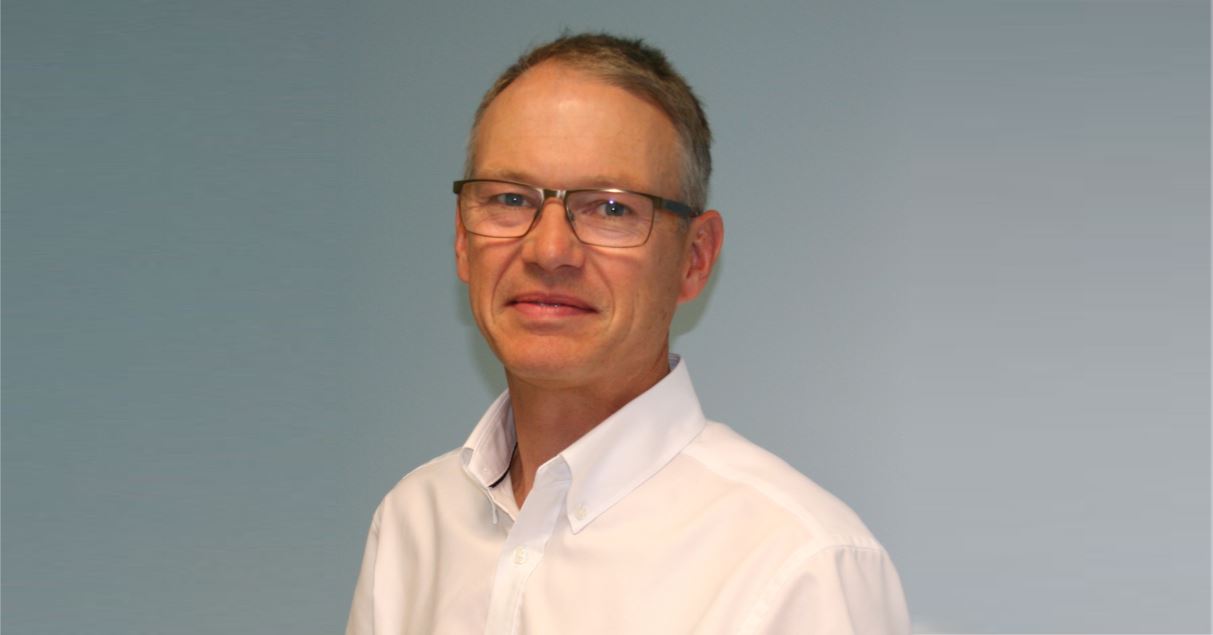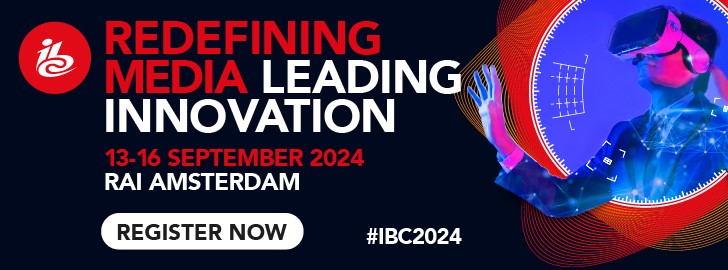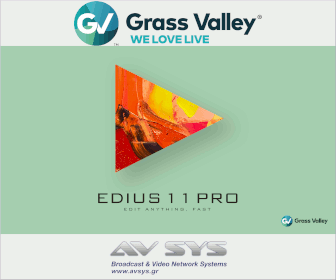Philip Scofield, Managing Director of Crystal Vision is a man with great knowledge and experience about the TV Technology and the Industry globally.
Our Technological Online Portal had the chance to ask him some questions. His answers might be quite helpful for the TV Broadcasters, Telcos with TV Services, OB Services Companies, TV Studios and Content Creators.
Text: Andreas Tzanakos
Images: Crystal Vision's Archive
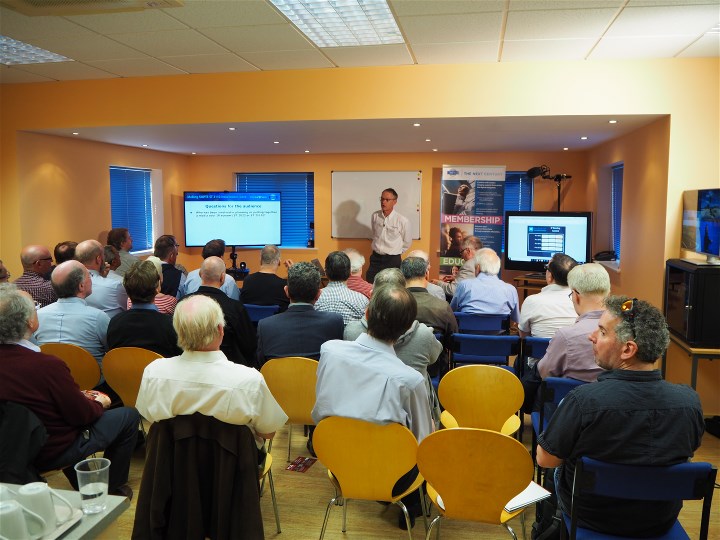
radiotvlink.gr: We strongly believe that is important for our readers to know some details about you and your professional career till today. So please tell us some things about Philip Scofield.
Philip Scofield: Hello! I am an engineer and entrepreneur who has always worked with television. Currently I am helping our IT engineers create software based products that will transform the technology used for television production.
My first full time job was as a graduate Design Engineer at the BBC in London during the early days of digital television. It was a good time! The BBC had more staff and money than they do now and we were free to work with the latest technology. Our department was very enthusiastic in helping the BBC move from analogue PAL to digital. I worked on some great early digital products which could not be bought from commercial organisations.
I eventually left the BBC and moved to a private company and became half of a two man team designing television special effect products. It was hugely satisfying that 2,000 of the CEL Maurice special effects system that we developed were sold throughout the world. CEL has since been amalgamated with bigger companies but the lab near Cambridge is still developing broadcast products.
I setup Crystal Vision more than 20 years ago with the intention of helping broadcasters make the most of changes in technology. For the first 2 years I designed some of the products, but as the company grew I moved into different roles as Managing Director ensuring we had strong product management, marketing, sales and manufacturing capability. My continuing role is to encourage new ideas and ensure the company changes to match the technology available and the customer requirements. There has never been a bigger requirement for change than now! The move of the industry to IP requires new specialist staff and new skills for everyone involved in the technology.
radiotvlink.gr: Can you provide us with a short profile of Crystal Vision (fiscal situation, number of employees, factory, production chain, global presence and the industries that now covers)? Which are the main stations-achievments in its successfully route in the industry till now?
Philip Scofield: Crystal Vision is a UK company based in Cambridge that manufactures SDI and IP products for television and associated industries. It is privately owned by my family. Past profits have been invested so that the company owns the premises and is financially strong. All the products are designed at our head office in Cambridge. Manufacturing is controlled from Cambridge using in house and contract facilities.
The products are aimed at the broadcast television industry although they are used in other markets including, radio, education, communications and AV events. The initial growth of the company was due to a number of successful large studio projects for the BBC in London. Our interface products were ideal for the new digital studios and despite Crystal Vision being a small company we competed successfully against a number of larger UK and North American suppliers. Since then Crystal Vision has become a global supplier. Our products sales have grown from pure interface products and we have a wide range of SDI products. Future products will be software based using powerful CPUs and although designed primarily for IP will still include SDI connectivity.
radiotvlink.gr: We all know that Crystal Vision has an extended range of products that provide solutions to several sectors of the broadcast industry. Can you describe in brief the Crystal Vision's product portfolio in order to let the experienced readers of our Tech Portal remind, and the newer that now enters in our industry learn about what the company can offer to them?
Philip Scofield: Crystal Vision makes infrastructure and keying products for broadcast engineers in the television industry. Providing logo and chroma keyers and the full range of interface, we specialise in up and down converters, synchronisers, routing switches, audio embedders and video delays. We work hard on the technical details and win projects when customers do technical evaluations, comparing different manufacturers products.
Our video over IP products, software apps that run on media processor hardware, are the easiest way for systems to grow and mature with the transition. We are the only supplier of IP gateway products that run on a software platform and offer the most easily upgraded solution. By changing Apps an SDI to IP converter can become a completely different IP product.
radiotvlink.gr: What is the designing and manufacturing approach that stands behind each product of Crystal Vision? In your opinion, what are the main characteristics that defines and distinguish the product portfolio of Crystal Vision? And why the name Crystal Vision is a synonymous of success for more than 20 years?
Philip Scofield: There are three things that we need to do to be a successful supplier in the broadcast market.
1. We need to choose the correct products to make, and give these product the features customers require.
2. We need to have an efficient design process, with the latest tools to enable us to compete with other suppliers who have more staff working in development.
3. We need to support the people who have purchased Crystal Vision products. Happy customers will continue to buy products for their future requirements.
To get the product specification right I personally work with two product managers and we go through a formal process of finding out what people want. We specify a number of user cases to imagine the different ways the product could be used. For example, one user case for a chroma keyer is when it used with a fixed camera position and a simple graphic. Another user case is a virtual studio where a presenter will be moving round the set and the lighting and quality of the blue or green backdrop will change. Part of this process requires us to have good technical contacts. In Greece, for example, we work with Ariston BTS who are experts in designing and building television installations. Many conversations go between the two companies that help us understand what customers need. We also have close relationships with the research departments at the big broadcasters in the UK and USA where we get advance information on what will be required in the future. In a number of organisations we have friends where we can try out our ideas. We get honest feedback of what they like and what they don't. I could go on for a long time about product management as it is a hugely important subject. Development resources are expensive and it is important not to design the wrong thing!
The next stage in product development is to ensure we get what we ask for! We use a system known as "Test Driven Development". It requires the test for the products to be specified at the same time as the high level design is carried out. It means that each small section is tested before it is used rather than there being a huge test requirement at the end of the project. The effect is that projects seem to start slowly but should end more quickly!
Customer service needs to be at the heart of a company's culture. We have product experts at Ariston who have often installed the equipment. They have instant access to engineers in Cambridge in the UK where we can quickly mimic any customer installations to give an accurate response to complicated technical questions. The same system also works for pre-sales questions. Another resource available is on our website. The technical information for each product includes the operational GUIs which makes it clear what controls are available. There is a registered area for customers and prospective customers that gives access to the manuals on all current and past products. It also has a software document which not only indicates the latest version of software but also what changes were carried out between versions. Part of offering good customers service is being honest. If a fault was corrected in a product the details of that fault will have been put in the software document. Customer support is the most important part of the company operation. We have had customers that have worked with us for twenty years. The only way we can build these relationships is if they are happy with the support they receive.
radiotvlink.gr: Why professionals should ask for Crystal Vision's suggestions before buying equipment? Does Crystal Vision listen carefully what the customer and/or system integrator say? What can they found in Crystal Vision's after sales support services? And what about the company's warranty policy?
Philip Scofield: We like to get involved with the system design at an early stage and always invite customers to ask for our help. In many cases with have a number of options that can solve a problem in different ways. In Greece and Cyprus the best contact for this is Ariston BTS whose engineers have a very detailed knowledge of how to get the best from our equipment. Being a System Integration company they also understand how our equipment can be used. The engineers at Ariston are in regular contact with our engineers in Cambridge and will quickly find out anything they don't already know. They also feedback plenty of suggestions for new products or changes to existing products. Their experience in building some of the biggest television installations is always available to their customers.
All our equipment has a 5 year warranty providing the products are registered. We are confident our equipment will give many years of good service and we demonstrate that by having one of the longest warranties in the television industry.
radiotvlink.gr: Crystal Vision's portfolio has many different solutions covering FD insertion and reading, Aspect ratio conversion, Audio conversion, Audio delay, Audio distribution, Audio embedding, Audio processing, Chroma keying, Clip storage, Colour correction, Fibre optics, IP to IP translation, Logo and linear keying, Reference generation, Routing and switching, SDI to IP conversion, Synchronisation, Up and down conversion, Video A to D conversion, Video D to A conversion, Video delay, Video distribution and I really do not know if I forgot anything else. From your point of view what are the flagship products from each product family of Crystal Vision that a professional from our industry should invest and why? Please refer to some products in brief for all the above solutions and give us the very highlights of each one.
Philip Scofield: Thank you for saving me from having to list the Crystal Vision project range! Crystal Vision has a large range of modular products. We supply the backbone connectivity for many television installations. There are a number of versions of our products designed to fit the different way that different broadcasters work. Over the years we have worked with how audio, subtitling and data such as wide screen signaling can be embedded with the video signal. When our products convert between high and standard definition our products can handle the different ways data is handled within the two formats. Our Up-Down converters can automatically convert between different data standards.
The products we first talk about when we see new prospective clients are the ones that are different to those from other companies which I suppose makes them the flagship products. The IP products are unique and I shall mention them later. Our keying products are considered the best there are by those that used them. Our up and down converters often get used after rigorous picture quality tests. Our Safe Switches have been used by the biggest broadcasters as the only device that is not duplicated when it switches between main and emergency feeds. Their reliability is trusted to keep channels running.
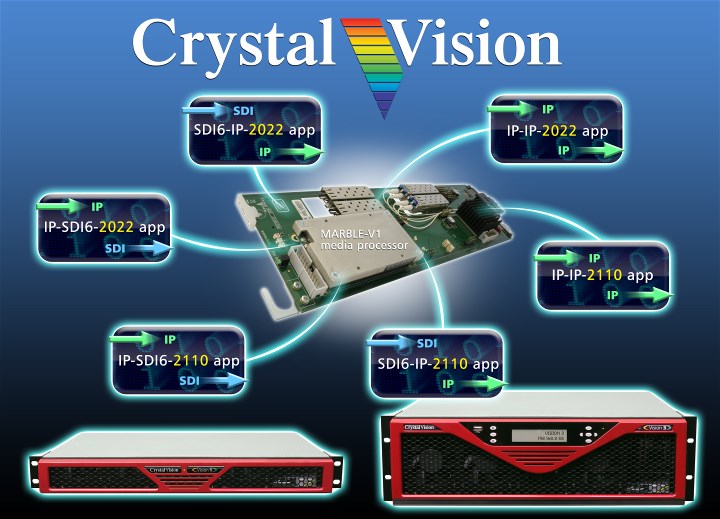
radiotvlink.gr: The migration to IP seems to be a headache for many professionals of our industry. What can Crystal Vision's solutions offer to our industry? Can you mention some compelling examples?
Philip Scofield: The migration to IP will be the biggest change to television since the move to colour. Introducing change always causes headaches! All the broadcasters and manufacturers have experts that create reliable economic solutions using SDI. IP solutions need to be available that offer greater flexibility and better value for money than the current SDI solutions.
Crystal Vision's approach is that the move to IP should combine with a move towards software based products. The different IP products from Crystal Vision are software Apps that all run on the same hardware. The single hardware platform, MARBLE-V1 is an image processing computer with very high bandwidth IP and SDI inputs and outputs. For the initial IP gateway products the same hardware is used whether the conversion is from IP to SDI, SDI to IP or whether you go IP to IP. The pricing is such that it is economic to buy different Apps to change the function of your MARBLE-V1 cards as your requirements change. The main use for now is to use MARBLE-V1 as a converter between SDI and IP. When some of those cards are no longer required to do that function, new apps can move those boards to what will be the more common IP to IP requirement.
The move to IP will gain momentum when the suppliers offer solutions that exploit the advantages of IP. So far most IP products are SDI products with IP converters on the inputs and outputs. This approach will change! IP products should be true software devices. It will only ever be a short term option to get existing SDI products and fit IP interfaces round them. Crystal Vision IP products have been designed as brand new IP products running as software. This will enable our customers to get the advantages and cost saving that IP solutions should provide.
radiotvlink.gr: Having in mind that 4K and HDR are now at the forefront of the global market, what about the Crystal Vision's approach to these technologies? What are the solutions that Crystal Vision can provide to the professionals to keep up with these new technological innovations?
Philip Scofield: This year we have been concentrating on moving our new products to a software platform that provides both IP and SDI connectivity. However this plan will also work with 4K and HDR. The good thing with software products is that they are resolution independent. When we introduce a higher speed processer card we will quickly move to 4K. The first products are likely to be 4K delays and 4K up-down converters. Other converter products for working with the different standards of HDR are possible and we will finalise them when we have the 4K CPU platform. Later developments are likely to include keying products.
We haven't yet published a timetable for the release of 4K products but they will come. One of the real strengths of software and IP technology is it is easily scalable as faster electronic components become available.
radiotvlink.gr: What do you know about the Greek TV Industry? Please mention some clients of the company from Greece that are now make good use of Crystal Vision's solutions. What are your thoughts and feelings for the collaboration with Ariston BTS, the distributor for Crystal Vision's products in Greece and Cyprus? What are Crystal Vision's future prospects for the Greek market?
Philip Scofield: Ariston BTS have supplied Crystal Vision equipment to many of the large Greek and Cyprus broadcasters and production companies including, ERT, SKAI, TVONE (ex-MEGA TV CY), KAPA STUDIOS and many others. In Greece we have found customers to be technically aware and orders often rely on the customer doing their own evaluations. This works to our advantage as we are proud of the quality of our products and we are well represented by Ariston. Customers know that Ariston will hand over a system with Crystal Vision equipment that is correctly installed and will fully meet their requirements.
radiotvlink.gr: Please refer to some clients with global action that are now leverage Crystal Vision's products. In your opinion, what is the profile of Crystal Vision's products user?
Philip Scofield: A number of the world's biggest broadcasters are major clients of Crystal Vision. The list includes, BBC and ITV in the UK, ESPN and Turner in the USA, ProSieben in Germany, ORF in Austria. However we also supply educational establishments, telecom companies, and some small broadcasters especially in the USA. We can make products that have the quality and features people want and yet have prices that can win tenders and be afforded by smaller companies.
radiotvlink.gr: Does Crystal Vision join in Associations (Technological, Trade and others) and what about its contribution?
Philip Scofield: Crystal Vision are active members of both the IABM and the SMPTE. Personally I am a company director of the IABM and take part in the meetings that decide what direction the organisation will take and review the work carried out by the management.
Crystal Vision regularly hosts regional SMPTE meetings, the most recent being in May 2018 when Richard Lawrence of Crystal Vision gave a presentation called "Making SMPTE ST2110 installations work" A video of this presentation is available on the Crystal Vision website: https://www.crystalvision.tv/resources/videos.html
radiotvlink.gr: IBC is getting closer. So it is the right time to reveal and share with us and our readers what will be the new products and the highlights of Crystal Vision's stand -2.C28 if I remember well- at the IBC2018.
Philip Scofield: The theme of the booth is that IP doesn't have to be difficult. We will be showing an IP system which includes Crystal Vision equipment, some IP routers from different manufacturers and a control system from Rascular Technology. There is still nervousness in putting IP television systems together and we will be showing it need not be difficult. Broadcasters will get the most benefit from IP systems when they are confident in buying from a number of suppliers. Up to now IP systems have often been purchased from a single supplier, generally resulting in systems that are not the most convenient or the best priced. We will be demonstrating that it is now safe to buy equipment from a mixture of suppliers confident that all the equipment can work together.
Our IP products are based on our MARBLE-V1 hardware platform and a choice of six software applications that can run on it. The first six software Apps are gateways from SDI to IP, IP to SDI and IP to IP working in both the SMPTE ST2022 and ST2110 sets of standards. Having a software based system means that there is huge flexibility on what can be done and as the installation develops the function carried out by the device can be changed. The same hardware can be configured to be any of our IP products.
As well as our new IP products we will be showing our full range of SDI products. The product that normally gets the most attention at shows is our Safire 3 chroma keyer. In many applications this has been shown to be the best chroma keyer available and has pricing such that is used by both the top broadcasters and smaller organisations with lower budgets. For anyone with a detailed interest in chroma keying there will be some great example footage so our demonstrators can show how easily good results can be obtained.
radiotvlink.gr: What else should we all expect for the R&D department of Crystal Vision in the future? What are the prospects globally for Crystal Vision in the near future?
Philip Scofield: The industry is going through a period of change and that always offers opportunities as well as challenges. We are aware that broadcasters will be juggling the need to be cost effective as well as wanting to move towards new technology. Our MARBLE-V1 software based platform has both IP and SDI connectivity so we will introducing products that can either be used in a mixed SDI and IP environment or be used in an SDI environment until the user is ready to move to IP.
Flexibility is the key advantage of software and IP. There will be new versions of the products released at IBC. With MARBLE-V1 as a common platform, customers will be able to buy new Apps to change what they do with their systems. We will be releasing products that can do colour correction and video and audio delays. Also we are looking at the IP equivalent of our Emergency Switches.
I am very excited about the prospects for Crystal Vision. There is a continuing requirement for the SDI products as they still help broadcasters build the most cost effective installations. The requirement for IP products is growing quickly and Crystal Vision is unique in offering a powerful modular software based system.
radiotvlink.gr: Thank you very much for the fruitful discussion we had.
Info: www.crystalvision.tv & Ariston BTS*
*Distributor for Greece & Cyprus



